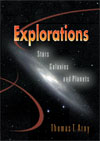 <a onClick="window.open('/olcweb/cgi/pluginpop.cgi?it=gif:: ::/sites/dl/free/0072472723/17138/04.gif','popWin', 'width=316,height=136,resizable,scrollbars');" href="#"><img valign="absmiddle" height="16" width="16" border="0" src="/olcweb/styles/shared/linkicons/image.gif"> (11.0K)</a> Interactives <a onClick="window.open('/olcweb/cgi/pluginpop.cgi?it=gif:: ::/sites/dl/free/0072472723/17138/04.gif','popWin', 'width=316,height=136,resizable,scrollbars');" href="#"><img valign="absmiddle" height="16" width="16" border="0" src="/olcweb/styles/shared/linkicons/image.gif"> (11.0K)</a> Interactives
What Do Professors Think?
AcknowledgementsInteractives Like No Other
McGraw-Hill is proud to bring you an assortment of outstanding Interactives
like no other. These Interactives offer a fresh and dynamic method
to teach the astronomy basics. Each Interactive will allow students to manipulate
parameters and gain a better understanding of topics such as Blackbody Radiation,
The Bohr Model, Retrograde Motion, and the H-R Diagram by watching the effect
of these manipulations.
Each Interactive will include an Analysis Tool (interactive model),
a Tutorial describing its function, Content describing its principle
themes, related Exercises, and Solutions to the exercises. Plus
you'll be able to jump between these Exercises and the Analysis Tools with just
the click of the mouse.
To run the interactives you will need Microsoft Internet Explorer 5.5 or later or Netscape 6. If you are using MAC OS 9.1 or lower you will need to download the free DMR or JAVA (MJR 2.2.5). If you are running a Windows-based Operating System, try using Internet Explorer 6.0, which can be downloaded free at http://www.microsoft.com/windows/ie/default.asp. If you are using Netscape go to http://www.netscape.com/computing/download/ to download a free version of 6.2.1.
Interactives Blackbody RadiationIn the Blackbody Radiation Interactive, students can manipulate the scroll
bar in the upper right corner and see how temperature influences the size
and luminosity of stars. In the scroll bar in the bottom portion of the
Interactive, users can see how temperature of stars affects its wavelength.
The Bohr Atom The Bohr Atom Interactive illustrates the concept of emission and absorption
spectra as well as Kirchoffs Laws by having students "Build an Atom."
Students can construct an atom with energy levels corresponding to different
colors of light. By heating a gas of these atoms or shining a continuum light
through them students will construct different spectra.
Retrograde Motion
This Interactive illustrates how the different planetary orbital velocities lead to “looping” or retrograde motion in the night sky. The Interactive will show the view at successive times from the Earth as well as from a “birds-eye” perspective in space. Users will be able to manipulate the size of planetary orbits, plus be able to view the retrograde motion from different perspectives, like what the retrograde motion of Earth looks like from Mars.Solar System Builder
This Interactive will allow students to build their own solar system by placing planets of different masses at different locations and watching these systems evolve. Choose from a Sun and Earth system; our solar system up to Saturn; or 2,000 randomly-selected systems. Watch how a Hot Jupiter interacts with a Mercury-sized planet, or how Saturn interacts with a Mars-sized planet. What will happen? Check out the Interactive and see for yourself. Cosmology
The Cosmology Interactive allows you to play with the equations for the evolution of the Universe. You will see how the universe might evolve under certain parameters, such as the Hubble Constant and the density parameter Omega. You will see a representation of the Universe's evolution in terms of the expansion or collapse of a uniform distribution of galaxies in a window viewer in the upper right. Notice how the color of the galaxies change from red when they are expanding away from each other (redshifting) to blue (blueshifting) when they collapse back towards each other in Omega > 1 Universes.H-R Diagram
Manipulate the properties of a star (luminosity and temperature) and see how the star evolves along its evolutionary path at a rate determined by its nuclear burning timescale. As the star evolves, its color and size will change.
Return to Top What do professors think? "I loved it. I have been looking for something similar for some time but
haven't found anything quite this good delivered on the Internet." -- Larry
Sessions, The Metropolitan State College of Denver "This is a very useful introduction to Blackbody Radiation. I loved the
(Interactive)." - Parviz Ansari, Seton Hall Univ.
"I would definitely incorporate this applet into an introductory astronomy
class to help students understand the issues of emission and absorption lines."
- Anna Jangren, Wesleyan Univ. Return to Top
Acknowledgements McGraw-Hill would like to thank Adam Frank, professor at the University
of Rochester, Rochester, NY and President of Truth -N- Beauty, as well as
the other employees of Truth-N-Beauty, especially, Ted Pawlicki and Carol Latta.
McGraw-Hill also would like to thank the reviewers of these Interactives:
Peter Becker, George Mason Univ.
Parviz Ansari, Seton Hall Univ. Larry Sessions, The Metropolitan State College of Denver Donald Terndrup, The Ohio State Univ.
Anna Jangren, Wesleyan Univ.
Return to Top
|



 2002 McGraw-Hill Higher Education
2002 McGraw-Hill Higher Education

 2002 McGraw-Hill Higher Education
2002 McGraw-Hill Higher Education